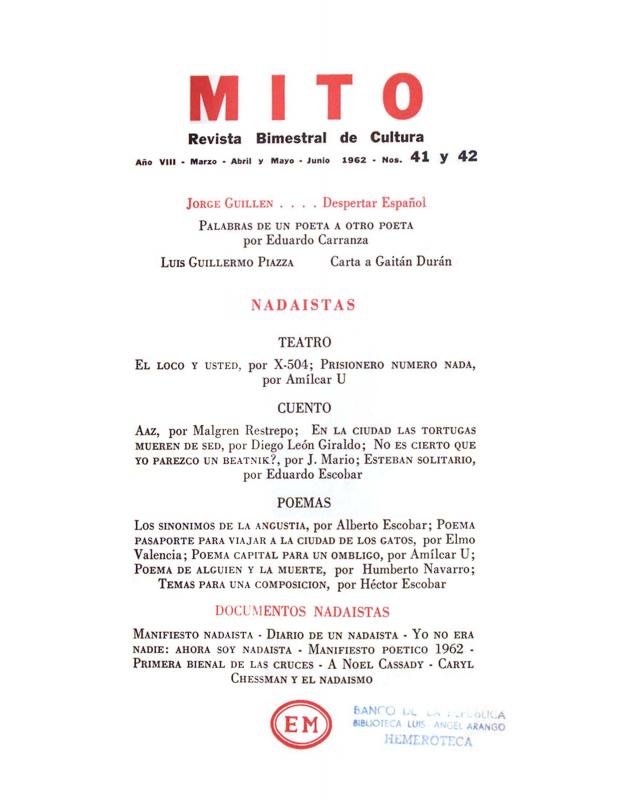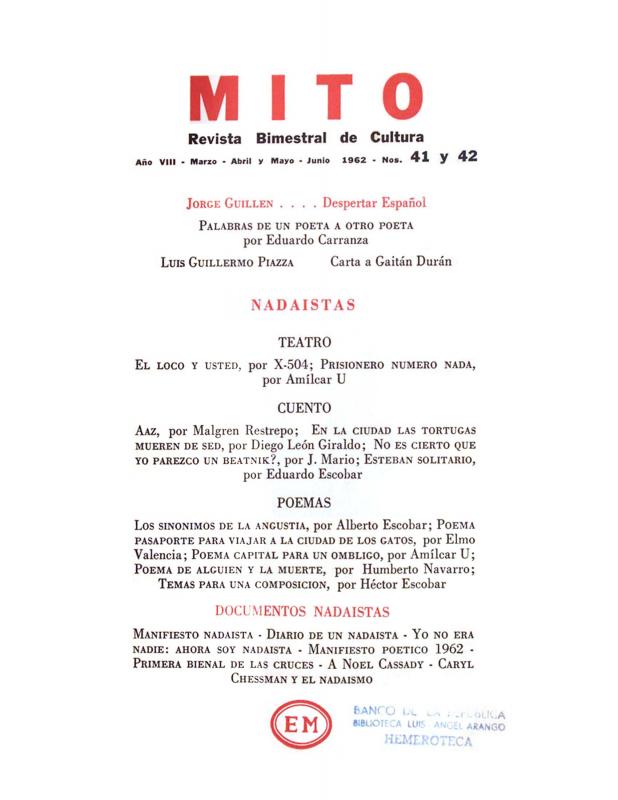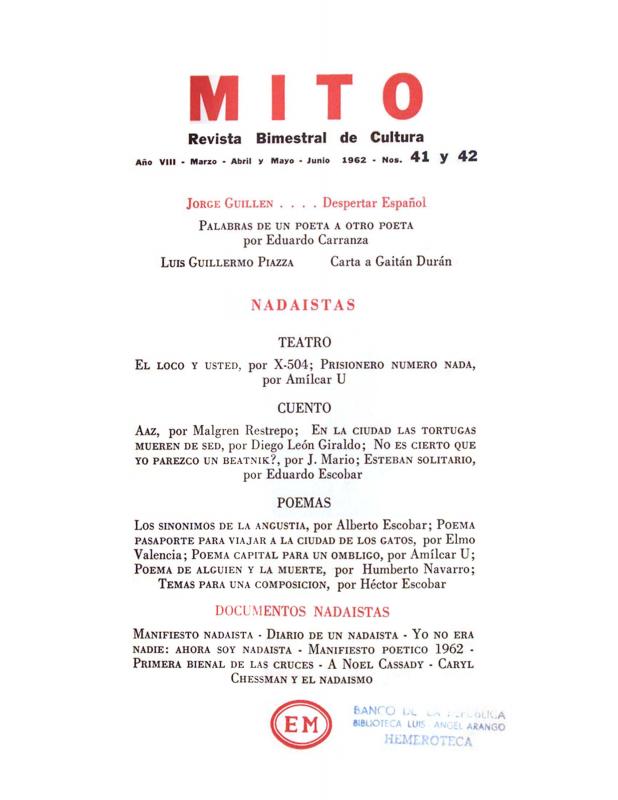This letter, written to express solidarity with a poet who had been jailed in San Quentin (San Francisco, California), reveals the aesthetic and political poetics of the Nadaísta [Nothing-ist] group (1958–70) that rejects the State, civic responsibility, the legislature, science, and morality. The letter condemns the vicissitudes of the twentieth century, the latest stage in human history (“the concept of ‘time is money,’ which is the most corrupting onanistic vice of our modern times”). The nadaístas associate creative powers with the virtue of vices and describe marihuana as something that “stimulates great mystic power in mankind … and elevates humanity to the highest peaks of its essential being.” These ideas transform artists into social outcasts since their aspirations are not compatible with the middle class postcapitalist world and they are therefore seen as evil or threatening.
Artists have been portrayed as a menace to society in western literature ever since Plato’s “Republic.” In Classical Greece, artists were considered on a par with lunatics and epileptics, and were viewed as demigods. Over the course of time, artists were consigned to the shadows and lost their stature in society. In the early twentieth century, once the ties to monarchist determinism had been severed, artists had no role or position in society until they were once again co-opted by the world’s new economic powers—as they had been by earlier hegemonies—to provide the creativity of art that the new financial elite needed to prosper, this time in the form of what came to be known as advertising. The new generations of artists had conspired to deepen the chasm that separated art from society since the early years of the twentieth century. Artists presented themselves as the poison of the polis, different to the rest of the species because of their genius or their paranoid or vicious pathology. That attitude defined the philosophical, artistic, and poetic movements of the twentieth century in the major capitalist countries of North America and Europe. In Colombia, the nadaístas were perhaps the only group to adopt that spirit of artistic-criminal vehemence, which represented an important milestone in a traditionally Catholic and solipsistic society.
The nadaístas were in constant contact with contemporary visual artists, and worked together with them on certain projects, as in the case of the Festival de Arte de Vanguardia [Avant-garde Art Festival] in Cali (1965) and the Bienal de Las Cruces [Las Cruces Biennial] in Bogotá (1962).
Nadaísmo was a predominantly poetic movement that flourished in Colombian literary circles in the 1970s. In political terms, the group championed the Sartrean concept of nothing in the face of a history based on setbacks and absurdities. The nadaístas were not pessimists because they believed in the power of art—albeit transitory and redeeming—although they were convinced that there was no good solution to the atrocities committed by the bourgeois postcapitalist world, that continue to be overwhelming. On a poetic level, nadaísmo injected a well-deserved dose of lexical and thematic turbulence into the respectable Colombian literature, with neologisms that discredited the Spanish Language Academy, with loan words from the language of the international market, with symbolic inversions of hallowed and traditional ideas, and with plots based on sexuality, crime, and vice.
A collection of nadaísta documents were published in a special issue of Mito [Myth] magazine (1955–62) devoted to this group in the section called “Documentos Nadaístas” [Nadaísta Documents]. This document should be considered together with the one by “Amílkar U.” [Osorio Gómez] titled “Manifiesto poético 1962. Explosiones radioactivas de la poesía nadaísta” [see doc. no. 1131695]; the one by Gonzalo Arango, “El nadaísmo” [doc. no. 1131711]; and “Primera Bienal de Las Cruces” [doc. no. 1131727].



